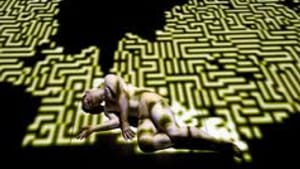Stay in the Loop
BSR publishes on a weekly schedule, with an email newsletter every Wednesday and Thursday morning. There’s no paywall, and subscribing is always free.
Here's what I meant to say…..
When choreographers talk (too much)

After the premiere of Play at this year's Live Arts Festival, the creators Sidi Larbi Cherkaoui and Shantala Shivalingappa sat on stage for an hour— first to discuss the process behind the creation of the piece, and then to answer questions, most of which probed deeper at what the artists tried to do.
Matthew Neenan similarly opened his recent BalletX world premiere Jackson Sounds with a short film, nicely shot and edited by Alexander Iziliaev. In the film, both Neenan and composer Robert Maggio explained how each drew on inspirations from the students at South Philadelphia's Jackson Public School to create the choreography and music.
In theory, learning about the process should yield a greater understanding of the art. But in these two cases, it failed to illuminate anything the pieces didn't already depict.
Play's title, not to mention the large chess and other board game pieces on the stage as well as the checkered tile backdrop, all suggested games and playing. The work itself consisted largely of make-believe scenarios with puppets, actual chess matches, piano and instrumental playing psychological games of one sort or another. The post-show talkback may have provided an additional hour of entertainment, but it didn't reveal or illuminate anything further about the piece.
Some audience members may have enjoyed discovering why Shivalingappa started quoting several paragraphs from a philosophy text, but learning the reasons for the choice could only have eliminated anyone's confusion post facto.
A film about the process
By contrast, the process revealed in Iziliaev's film revealed more than I cared to know before Jackson Sounds even got under way. During one of the film's segments, Neenan described himself taking cues from the middle schoolers, who made suggestions like, "This section feels like we're in a meadow," and similar comments. The choreography took these suggestions and built on them, but in a way that then lent the piece an amateurish, even cheap feel, ruining the piece in vitro.
Neither of these pieces fell into the category of abstract expressionist dance— a genre where some understanding of process can enhance an understanding of a piece.
In effect, process explanations tell the audience: "Don't understand a piece while you're watching it? Stay afterward and hear what the choreographer was trying to do." This approach removes one of the great pleasures of viewing any artwork— namely, critically engaging with a piece while it's happening in order to discern what the artist tried to communicate.
Dance in particular is a medium that offers little or no textual guidance and requires rapt engagement of the critical faculties. But why bother to engage your faculties if the whole thing will be explained to you five minutes after the curtain?
Racing for the door
I watch dance because it's a human art form that can present something about life that connects to my limited experiences. In the process, it broadens my understanding and develops me as a person by showing me the perspective of another. When the Chunky Move choreographer Gideon Obarzanek took a seat onstage after his Connected at the Annenberg recently, I raced out the door, not wanting to hear him muddle a piece that by itself had already spoken to me.
To be sure, had I left Jackson Sounds thinking that I'd just witnessed a work about Andrew Jackson or child abuse, I wouldn't have connected to the piece at all. But that's mostly the artist's responsibility. Ultimately the dance is the thing— not some pre- or post-show discussion.♦
To read responses, click here.
Matthew Neenan similarly opened his recent BalletX world premiere Jackson Sounds with a short film, nicely shot and edited by Alexander Iziliaev. In the film, both Neenan and composer Robert Maggio explained how each drew on inspirations from the students at South Philadelphia's Jackson Public School to create the choreography and music.
In theory, learning about the process should yield a greater understanding of the art. But in these two cases, it failed to illuminate anything the pieces didn't already depict.
Play's title, not to mention the large chess and other board game pieces on the stage as well as the checkered tile backdrop, all suggested games and playing. The work itself consisted largely of make-believe scenarios with puppets, actual chess matches, piano and instrumental playing psychological games of one sort or another. The post-show talkback may have provided an additional hour of entertainment, but it didn't reveal or illuminate anything further about the piece.
Some audience members may have enjoyed discovering why Shivalingappa started quoting several paragraphs from a philosophy text, but learning the reasons for the choice could only have eliminated anyone's confusion post facto.
A film about the process
By contrast, the process revealed in Iziliaev's film revealed more than I cared to know before Jackson Sounds even got under way. During one of the film's segments, Neenan described himself taking cues from the middle schoolers, who made suggestions like, "This section feels like we're in a meadow," and similar comments. The choreography took these suggestions and built on them, but in a way that then lent the piece an amateurish, even cheap feel, ruining the piece in vitro.
Neither of these pieces fell into the category of abstract expressionist dance— a genre where some understanding of process can enhance an understanding of a piece.
In effect, process explanations tell the audience: "Don't understand a piece while you're watching it? Stay afterward and hear what the choreographer was trying to do." This approach removes one of the great pleasures of viewing any artwork— namely, critically engaging with a piece while it's happening in order to discern what the artist tried to communicate.
Dance in particular is a medium that offers little or no textual guidance and requires rapt engagement of the critical faculties. But why bother to engage your faculties if the whole thing will be explained to you five minutes after the curtain?
Racing for the door
I watch dance because it's a human art form that can present something about life that connects to my limited experiences. In the process, it broadens my understanding and develops me as a person by showing me the perspective of another. When the Chunky Move choreographer Gideon Obarzanek took a seat onstage after his Connected at the Annenberg recently, I raced out the door, not wanting to hear him muddle a piece that by itself had already spoken to me.
To be sure, had I left Jackson Sounds thinking that I'd just witnessed a work about Andrew Jackson or child abuse, I wouldn't have connected to the piece at all. But that's mostly the artist's responsibility. Ultimately the dance is the thing— not some pre- or post-show discussion.♦
To read responses, click here.
Sign up for our newsletter
All of the week's new articles, all in one place. Sign up for the free weekly BSR newsletters, and don't miss a conversation.

 Jim Rutter
Jim Rutter